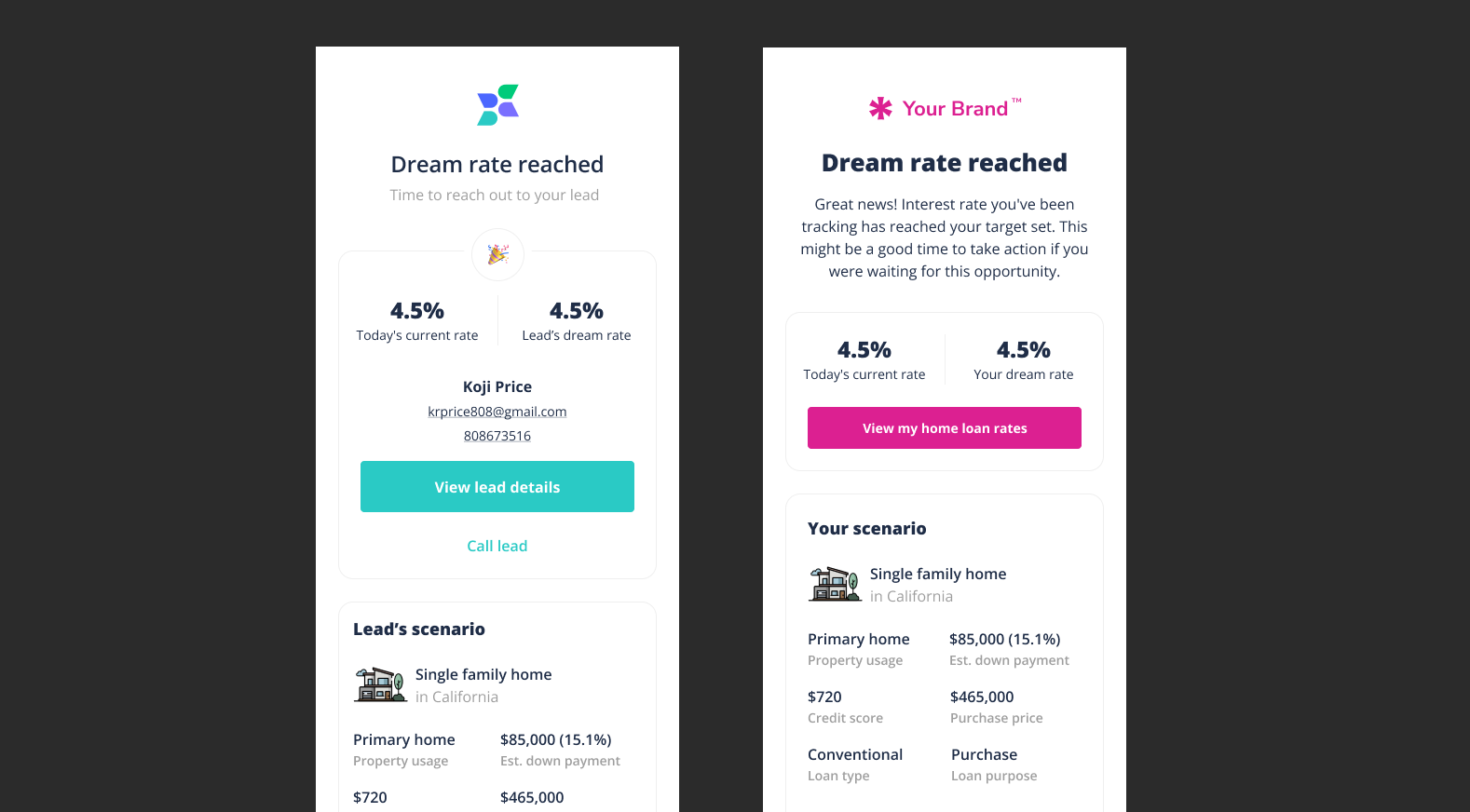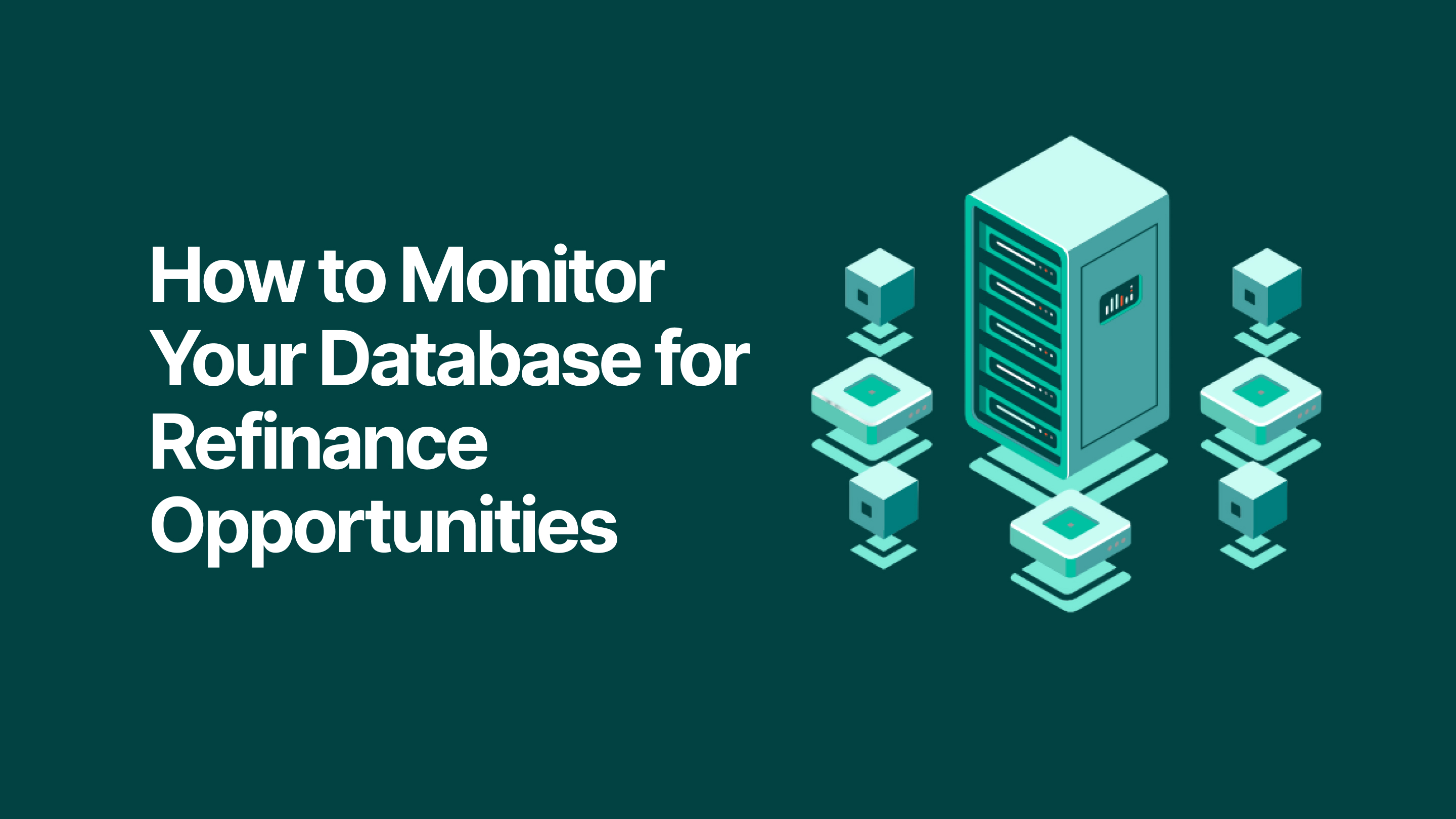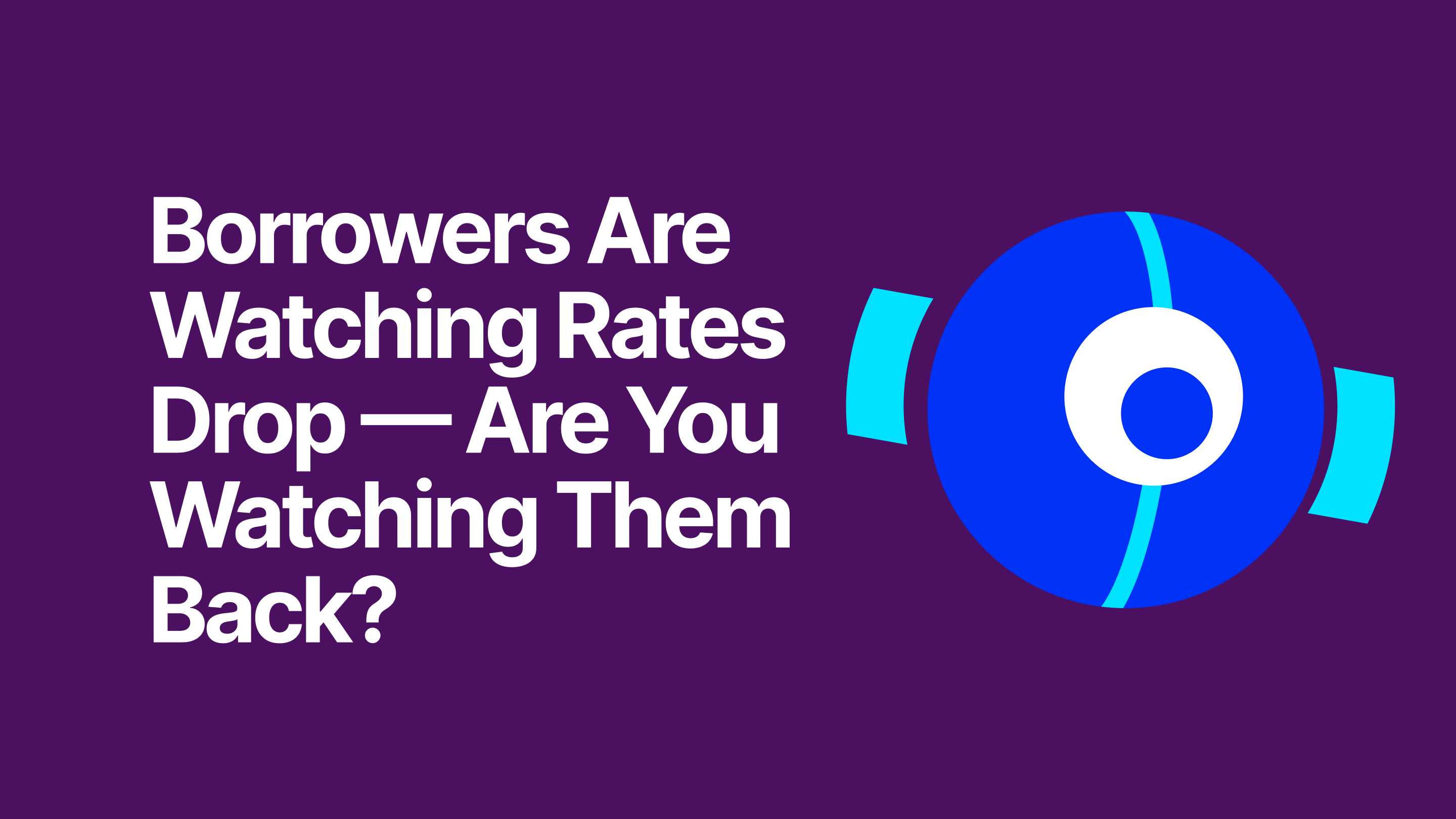This time two years ago, mortgage rates were the highest they’d been in decades. If you were working in the mortgage space at that time, you probably remember it — and not fondly. People will always need to move, so there’s some stability thanks to homebuyers. But when rates are high, the refinance market takes a nosedive.
Fortunately, things are looking rosier now. Rates have trended downward for the last couple of years. They now sit roughly 1.5% lower than the late 2023 peak.
That’s contributing to an uptick in refinances. If you want to drive more revenue at your mortgage lending institution, now’s the time to act. By monitoring your database for past borrowers who would benefit from a refi, you can tap into a preexisting pipeline to close more loans.
Why to invest in monitoring your database now
If you have someone from your team manually monitor your database for potential refinance borrowers, they’re going to need to allocate a decent amount of time to the effort. A quick scan won’t identify nearly as many opportunities — or as many truly solid ones — as a dedicated focus. Alternatively, you can automate this effort (more on that below), but that requires investing in technology.
Either way, you’re looking at allocating some resources to this effort. But it’s worth it. Now’s an ideal time for mortgage lending institutions to capitalize on the uptick in refinances.
Fannie Mae’s Refinance Application-Level Index (RALI) shows a year-over-year increase of more than 30% as of mid-October 2025. Even more compellingly, it’s up more than 200% from October 2023.
On top of that, the MBA Mortgage Refinance Index revealed a spike in refinancing activity around the Fed’s last meeting, at which it announced rate cuts. With experts anticipating more cuts on the horizon, being ready to act positions your team to succeed. If the Fed cuts rates at its late October and/or early December meetings, for example, you can use that as an opportunity to motivate borrowers to refi.
Let’s talk next steps. What does capitalizing on this opportunity actually look like? Mortgage lending teams can drive more refi activity by monitoring their database to identify good candidates to approach about a potential refinance.

Here are three steps to help you do just that:
#1: Get your CRM ready to support you
Encourage your loan officers to revisit the profiles of borrowers in your CRM. You might add a form field for each lead’s desired rate for refinancing, for example, then ask your loan officers to fill that in.
The CRM may be able to automatically track data that enriches your potential refi profiles, too. If you know their home value at the time their current mortgage was originated, you can tap third-party integrations to refresh that based on current valuations.
Ideally, your CRM should readily surface these key details:
- Current interest rate
- Desired interest rate for refinancing
- Current home value
- Amount of equity
With all of that available, your loan officers (or the tech tools you use) have an easier time identifying good candidates for refinancing.
#2: Define your thresholds for outreach
Next, decide when you want your loan officers to reach out, or your automated outreach to trigger. You have two options here:
General benchmarks
Some lending institutions trigger action with interest rate differentials. If the average rate is a full percent below the borrower’s current rate, they might reach out.
Others also track equity benchmarks. Since LTV ratios can qualify the lead for better terms, getting below a target LTV might indicate a good opportunity to encourage action.
Borrower-specific preferences
Other loan teams work off borrower’s individual preferences, delivering on the modern consumer’s expectation for personalized service.
By asking borrowers about the rate at which they’d consider refinancing, you give your loan officers a natural inroad to get back in touch with that individual. Then, tracking rate movement against their dream rate helps you clearly see when outreach would likely yield ROI.
#3: Create a monitoring process
Again, you have two options for how you approach this:
Manual effort
You could task a team member with regularly checking your database to see if any borrowers fit your criteria for refi outreach. This requires work from both that individual and your loan officers, though. The latter need to continually update borrower profiles in your CRM to make sure the right refinance leads get surfaced at the right time.
Automated mortgage database monitoring
Fortunately, you can avoid the heavy lift and deploy technology here. Your CRM might allow you to set automated alerts.
Or you might choose to deploy a solution that can overlay your CRM, seamlessly monitoring and driving next steps where appropriate.
Take our new Dream Rate tool as an example. All you need to do is connect it to your CRM and input the lead’s desired rate. Dream Rate then automatically tracks rate movements through your pricing engine.
Once rates hit that borrower’s desired threshold, the tool automatically sends two emails. First, it pings your loan officer, alerting them to the opportunity. Secondly, it sends the current rate info straight to the lead and enrolls them in rate alert emails. This personalized outreach warms the lead so that when your loan officer gets in touch, that person’s more likely to be ready to explore next steps.
Mortgage rates’ current downward trend puts your lending institution in a position to close more loans this year. You don’t want to miss out on the big slice of the pie that is the refinance market. With a plan to monitor your database, you get a way to move the needle on leads already in your system.
To see how Dream Rate can automate the work for you here, book a demo with our team today.
















